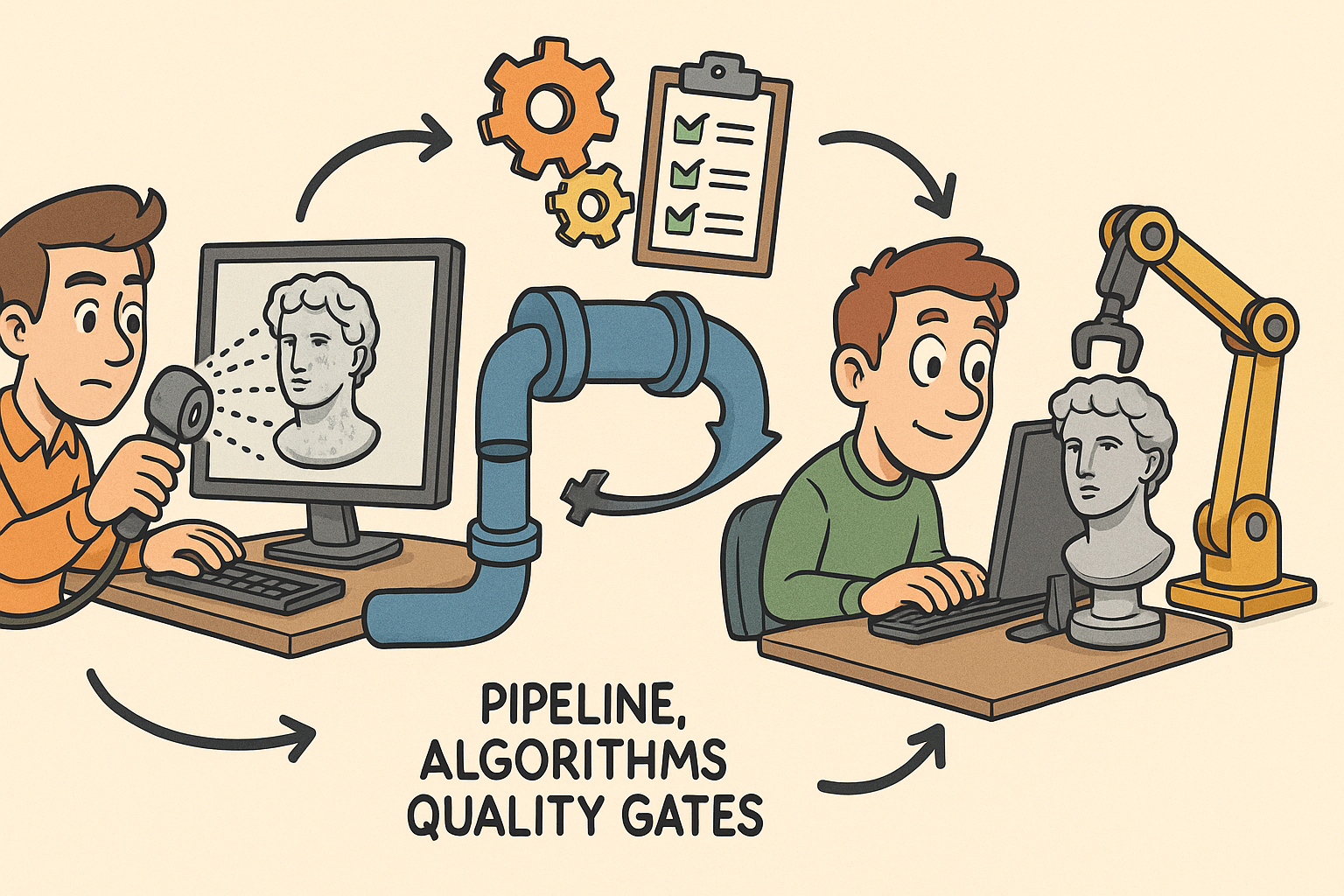Your Cart is Empty
Customer Testimonials
-
"Great customer service. The folks at Novedge were super helpful in navigating a somewhat complicated order including software upgrades and serial numbers in various stages of inactivity. They were friendly and helpful throughout the process.."
Ruben Ruckmark
"Quick & very helpful. We have been using Novedge for years and are very happy with their quick service when we need to make a purchase and excellent support resolving any issues."
Will Woodson
"Scott is the best. He reminds me about subscriptions dates, guides me in the correct direction for updates. He always responds promptly to me. He is literally the reason I continue to work with Novedge and will do so in the future."
Edward Mchugh
"Calvin Lok is “the man”. After my purchase of Sketchup 2021, he called me and provided step-by-step instructions to ease me through difficulties I was having with the setup of my new software."
Mike Borzage
Harnessing Big Data for Enhanced Design Efficiency and Precision
September 20, 2024 4 min read


Introduction to Big Data in Design
Defining Big Data in the Context of Design
Big Data refers to extremely large datasets that can be analyzed computationally to reveal patterns, trends, and associations, especially relating to human behavior and interactions. Within the design context, Big Data encompasses a variety of data inputs such as user feedback, sensor data, and market trends that inform and influence the design process.
The importance of Big Data in design disciplines cannot be overstated. In fields like architecture, engineering, and product design, leveraging large datasets allows for the creation of more efficient, accurate, and user-centered designs. By processing and analyzing data, designers can make informed decisions that improve the quality and relevance of their work.
Historical Perspective
The evolution of data usage in design has been marked by several key milestones. Initially, design processes relied heavily on anecdotal evidence and the intuition of experienced designers. As digital tools became more prevalent, the integration of data analytics began to transform the approach to design.
One of the significant milestones in this evolution was the advent of computer-aided design (CAD) software, which allowed for more precise and data-driven design processes. Subsequent advancements in data analytics and machine learning further integrated data into the design workflow, enabling predictive modeling and real-time feedback mechanisms.
The Impact of Big Data Analytics on Design Processes
Improving Design Efficiency
Big Data analytics have vastly improved the efficiency of design workflows. By leveraging data, designers can streamline various stages of the design process, from initial concept development to final production. Efficiency gains are achieved through automation of repetitive tasks, optimization of design parameters, and reduction of rework.
Some of the key efficiency improvements include:
- Automated design iterations based on real-time data inputs.
- Optimization algorithms that reduce material usage and cost.
- Rapid prototyping facilitated by data-driven design adjustments.
Enhancing Design Accuracy
Predictive analytics play a crucial role in enhancing the accuracy of design outcomes. By analyzing historical data and identifying patterns, predictive models can forecast potential errors and suggest corrective actions. This minimizes errors and increases the precision of the final design.
Examples of enhanced accuracy include:
- Structural integrity assessments in architectural designs.
- Precision machining in manufacturing processes.
- Customization of ergonomic features in product design.
Customization and Personalization
Data analytics enable a high degree of customization and personalization in design solutions. By analyzing user-specific data, designers can create tailored products that meet individual needs and preferences. This approach is particularly valuable in industries like consumer electronics, automotive, and healthcare.
Real-world applications of personalized designs include:
- Custom-fit wearable devices based on biometric data.
- Personalized interior layouts in automotive design.
- Adaptive learning environments in educational tools.
Tools and Technologies for Big Data Analytics in Design
Software Solutions
Several design software solutions have integrated Big Data analytics to enhance their capabilities. Prominent examples include:
- Autodesk: Offers tools for predictive analytics and generative design.
- SolidWorks: Incorporates simulation and data analysis features for improved design validation.
These tools provide various features and capabilities, such as real-time data processing, integration with IoT devices, and advanced visualization techniques.
Data Sources and Integration
The types of data sources used in design are diverse and can include:
- Sensor data from IoT devices
- Customer feedback and reviews
- Market trends and competitive analysis
Integrating these data sources into design processes involves methods such as API integrations, data warehousing, and real-time data streaming. Proper integration ensures that relevant data is accessible and actionable for design decisions.
Analytical Techniques
Several key analytical techniques are utilized in Big Data analytics for design, including:
- Machine Learning: Enables predictive modeling and pattern recognition.
- Predictive Modeling: Uses historical data to forecast future design performance.
- Data Mining: Extracts valuable insights from large datasets.
Practical applications of these techniques can be seen in areas like generative design, where algorithms create optimized design variations, and in user experience design, where user interaction data informs interface improvements.
Future Trends and Challenges
Emerging Trends
The future of Big Data analytics in design is poised to be shaped by several emerging trends. The role of AI and machine learning will become increasingly significant, with AI-driven design tools offering unprecedented levels of automation and optimization. Innovations in real-time data integration and processing will further enhance the responsiveness and adaptability of design systems.
Challenges and Considerations
Despite the potential benefits, several challenges must be addressed to fully leverage Big Data analytics in design. Data privacy and security are paramount concerns, as the handling of large datasets often involves sensitive information. Managing data quality and ensuring accuracy are also critical, as poor data can lead to erroneous insights and suboptimal designs.
Conclusion
Big Data analytics holds tremendous potential to revolutionize the design industry. By harnessing the power of data, designers can create more efficient, accurate, and personalized solutions. As the field continues to evolve, embracing these tools and techniques will be essential for staying competitive and making informed design decisions.
In summary, the integration of Big Data analytics into design processes promises to unlock new levels of innovation and efficiency, enabling designers to deliver superior products and experiences.
Also in Design News

From Raw Scans to Manufacture-Ready Geometry: Pipeline, Algorithms, and Quality Gates
December 08, 2025 13 min read
Read More
Design Software History: Numerical Robustness in Geometry Kernels: History, Failure Modes, and Engineering Playbook
December 08, 2025 13 min read
Read More
Cinema 4D Tip: Reusable Cinema 4D Camera Rig Presets for Faster Shot Setup
December 08, 2025 2 min read
Read MoreSubscribe
Sign up to get the latest on sales, new releases and more …


